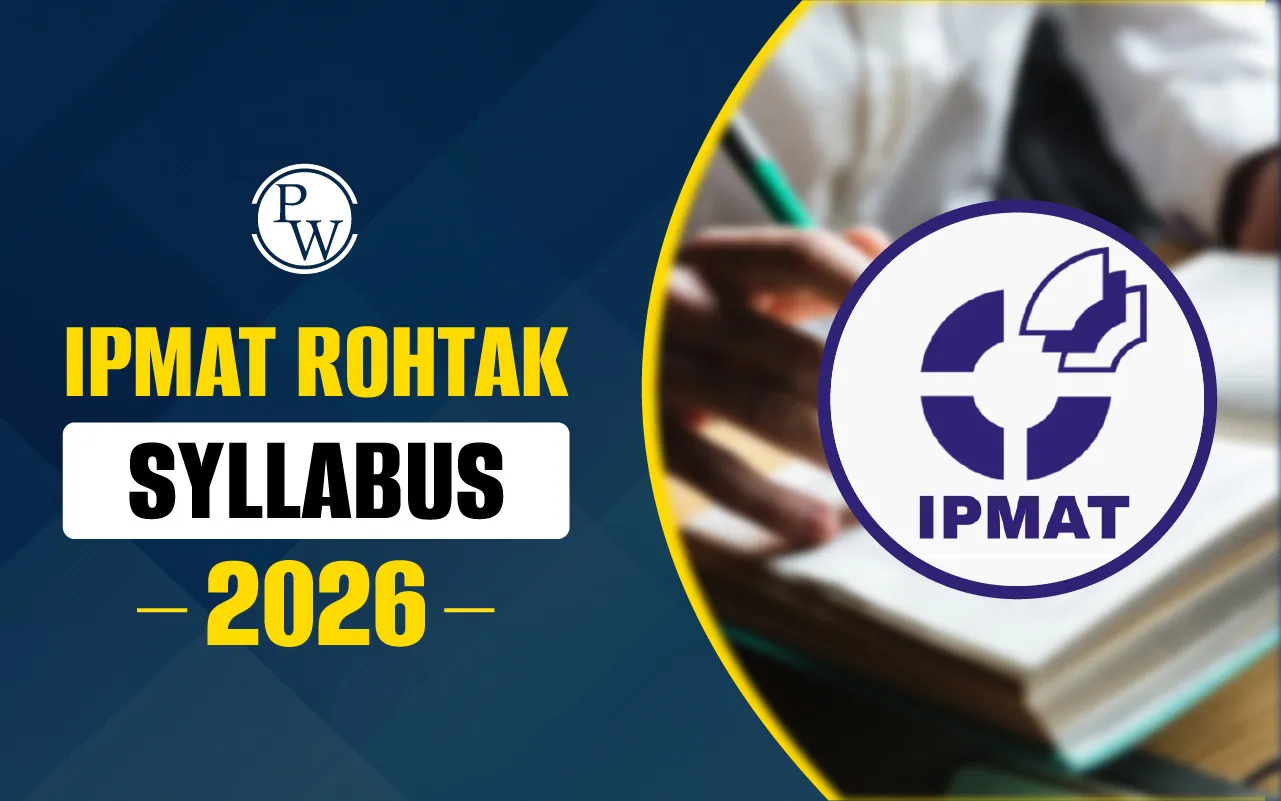
IPMAT Rohtak Syllabus 2026 is designed to test a candidate's skills in quantitative aptitude, logical reasoning, data interpretation, and verbal ability. IPMAT is the test to admit to the Five-Year Integration Programme in Management, an undergraduate-graduate programme at IIM Rohtak.
It assesses the ability of a student both in problem solving and reasoning, mastering the English language and aptitude towards management studies. Preparing according to the syllabus helps students focus on important topics, improve speed and accuracy, and increase their chances of securing admission.
IPMAT Rohtak Syllabus 2026 covers Quantitative Aptitude, Logical Reasoning & Data Interpretation, and Verbal Ability & Reading Comprehension, testing skills in problem-solving, reasoning, and English proficiency. There are 120 questions covering 480 marks to be answered in one hour and 20 minutes. Below is an overview of the IPMAT Rohtak Syllabus 2026 to help students understand the exam structure.
|
IPMAT Rohtak Syllabus 2026 Overview |
||
|
Section |
Topics |
Questions/Marks |
|
Quantitative Aptitude |
Percentages, Profit & Loss, Time & Work, Speed, Ratio, Equations, Geometry, Probability, Permutation & Combination |
40 / 160 |
|
Logical Reasoning & Data Interpretation |
Coding-Decoding, Series, Arrangements, Blood Relations, Directions, Graphs, Tables |
40 / 160 |
|
Verbal Ability & Reading Comprehension |
Reading Comprehension, Vocabulary, Grammar, Para Jumbles, Analogies |
40 / 160 |
Understanding the IPMAT Rohtak Syllabus is important to plan your preparation effectively. Here is the section-wise breakdown:
|
IPMAT Rohtak Syllabus 2026 |
||
|
Section |
Important Topics |
Difficulty Level / Notes |
|
1. Quantitative Ability |
Percentages, Profit & Loss, Averages Time, Work, Speed & Distance Ratio & Proportion, Linear & Quadratic Equations Inequalities, HCF & LCM, Rules of Divisibility Surds & Indices, Remainder Theorem Geometry, Mensuration Permutation & Combination, Probability Logarithms, Set Theory, Functions |
Easy to Medium |
|
2. Logical Reasoning & Data Interpretation |
Logical Reasoning: Coding-Decoding, Blood Relations Series Completion, Arrangements Direction Sense, Odd Man Out Data Interpretation: Bar Graphs, Pie Charts, Line Graphs, Tables 1–2 sets per exam, focus on patterns and calculations |
Easy to Medium |
|
3. Verbal Ability & Reading Comprehension |
Reading Comprehension: Main idea, specific details, tone, inference, vocabulary Vocabulary: Synonyms, Antonyms, Idioms & Phrases, Context-based fill-in-the-blanks, roots, foreign words Grammar: Parts of speech, tenses, connectors, subject-verb agreement, Direct/Indirect speech, voice, parallelism, modifiers Verbal Reasoning: Analogies, Paragraph Completion, Para Jumbles, Logical consistency of passages |
Easy to Medium |
Also Read: Ipmat Exam
The selection involves two stages, the IPMAT exam and a Personal Interview. The final merit list is prepared based on a combination of exam score, past academics, and PI performance.
|
Selection Process for IPMAT Rohtak 2026 |
||
|
Stage |
Description |
Weightage / Details |
|
Stage I – IPMAT Exam |
Applicants take the IPMAT Rohtak 2026 examination. There are tests in quantitative aptitude, logical reasoning, data interpretation, and verbal ability. |
- |
|
Stage II – Personal Interview (PI) |
Those shortlisted are subjected to a Personal Interview to determine their academic background, their communication skills as well as general awareness. |
– |
|
Final Merit List |
Selection is done through a combination of exam, academics and interview score. |
IPMAT Score: 45% Past Academic Performance: 40% PI Score: 15% |
The following is a strategy to be used in the preparation of IPMAT Rohtak 2026. The strategy aids in speed, accuracy and performance in all areas of the exam.
Quantitative Aptitude: Clarity of thinking is of great essence before attempting questions. Practice a little every day to develop perfection and speed. Know short commands and mental math techniques to carry out calculations in a shorter time. Just before exams, perform mock tests and revise important formulas.
Logical Reasoning & Data Interpretation: Start by solving easy questions and gradually move on to harder ones. Practice 2–5 sets daily to strengthen your reasoning and analytical skills. Focus on mental calculation and identifying patterns in the data.
Verbal Ability: Dedicate at least 30 minutes daily to reading newspapers, editorials, and books to improve comprehension skills. Learn five new words every day and revise them weekly to enhance your vocabulary. Practice grammar exercises and sentence correction regularly.
Full-Length Mock Tests: Attempt monthly full-length mock tests to evaluate your performance. Focus on improving time management, accuracy and selecting the right questions to attempt first. Analyze your mistakes after each test and refine your strategies accordingly.
